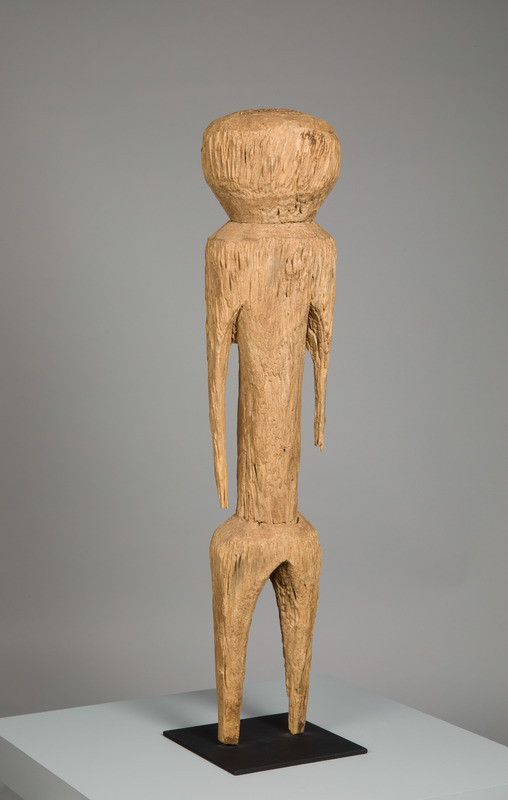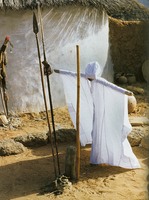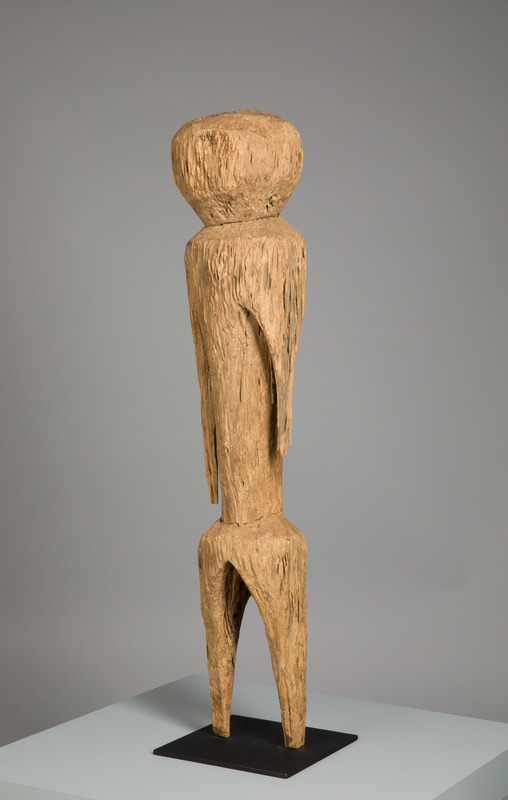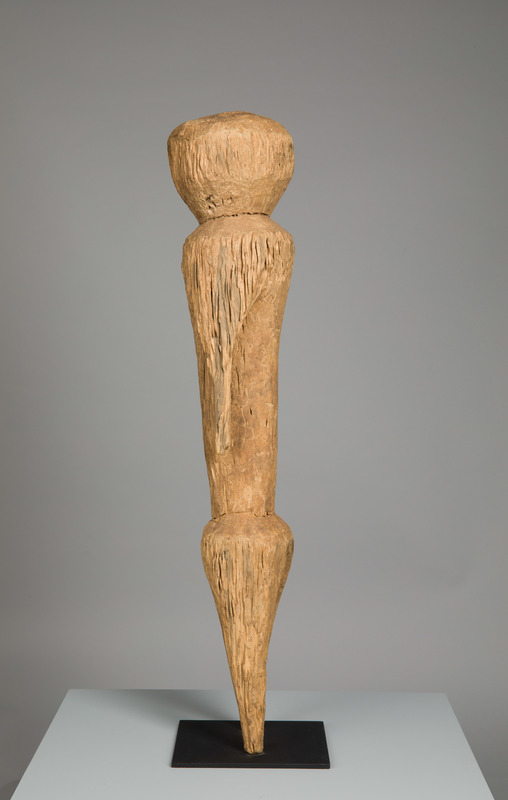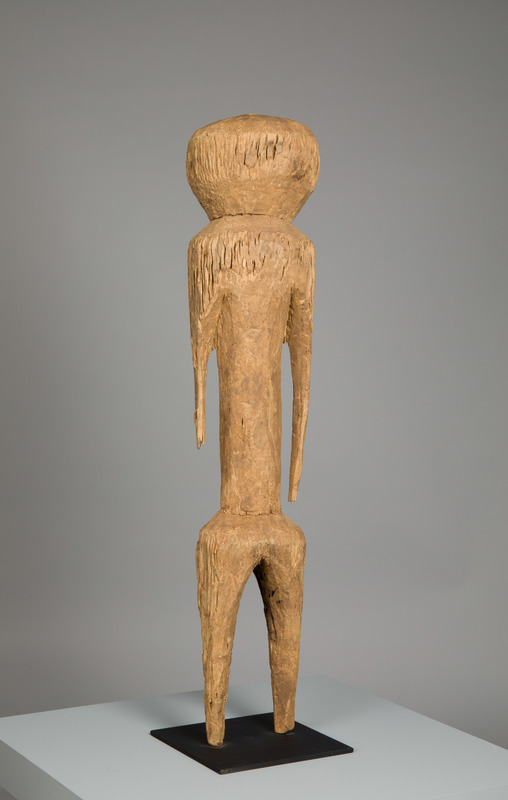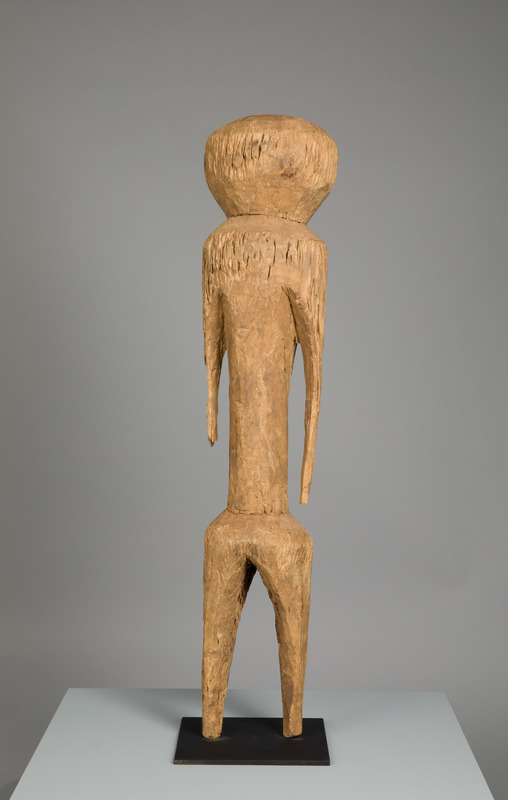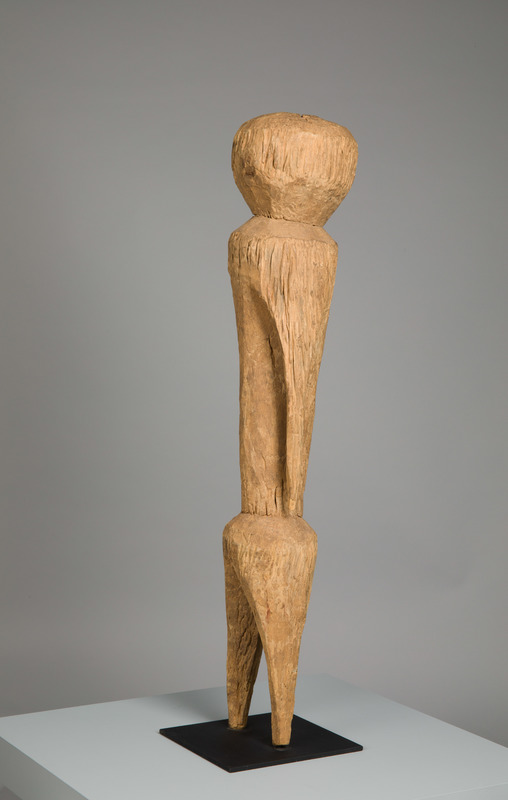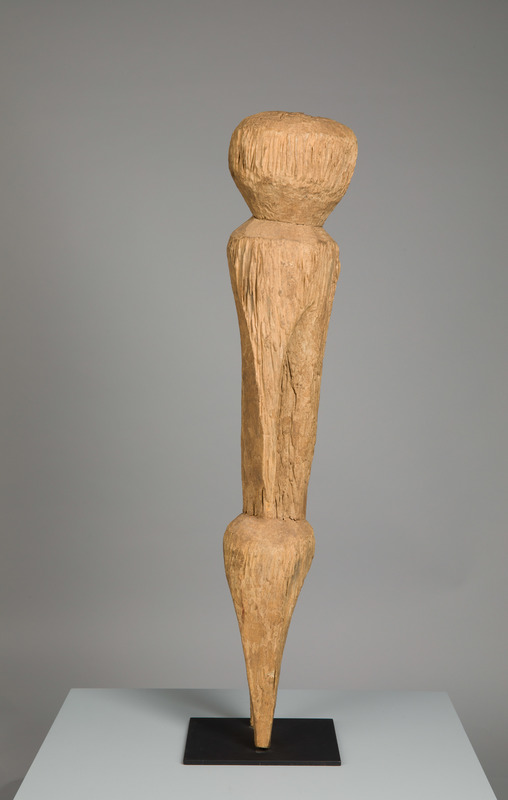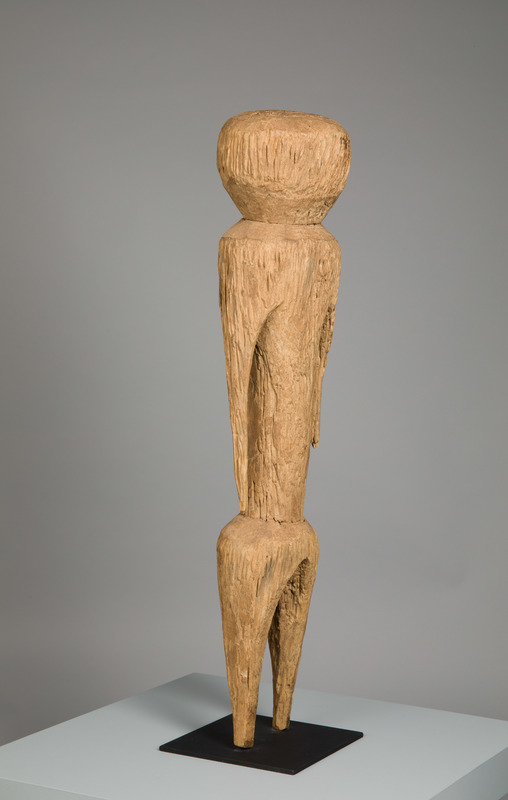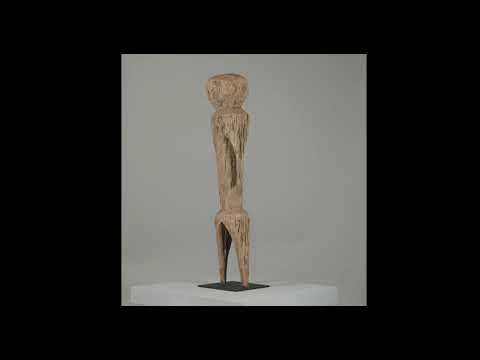Catalogue 33
Shrine Figure, tchitcheri
Moba people, Togo and Ghana
20th century
Wood; 32 x 7 x 6 1/2 inches (81.3 x 17.8 x 16.5 cm)
Collection of Allen and Barbara Davis
Wooden figures called tchitcheri are primarily prescribed by diviners to clients to furnish and activate their shrines. They are made in three general sizes that link to their function. Large ones, usually over a meter in height, represent ancient clan ancestors and are planted in the ground (some up to mid-waist level) away from the family compound. Smaller ones are for personal shrines that function in personal contexts for personal needs, and (as do all tchitcheri) serve a protective function and allow their owners to communicate their needs and problems to the supreme being. Medium-sized tchitcheri, like this one, are intended for household shrines. Always carved of a single piece of wood, these abstract figures depict only the basics of human anatomy, with an ovoid head, broad shoulders and hips, straight arms and legs, and a narrow cylindrical torso. Facial features are minimally depicted, and only occasionally is gender indicated (Kreamer 1987, 2004).
Shrine figures, like other wooden objects, are made only to order for specific clients. The decision to order a tchitcheri rests with a diviner, who determines that his client should commission the carving and even specifies the size and sex of the figure. That diviners are primarily responsible for ordering these figures indicates the importance Moba attach to them. In fact, the carving of tchitcheri is not open to all woodcarvers, but only those who are sons of diviners (Kreamer 1987, 53).
The tchitcheri are an essential tool of both male and female diviners, for they enable them, through the figures’ powers, to understand the problems of clients more clearly. They are not divination implements, but are required to give the diviners help and so are kept nearby. The tchitcheri are also essential in shrines in a household in order to ensure the efficacy of offerings made there, and so are placed and used there. These type of tchitcheri fall into three primary categories:
The first . . . are carved for the dead and rest in proximity to ancestral shrines. Female figures are generally located within the interior space of a family compound while male figures are kept in the family vestibule, a space viewed as male and exterior. [The second type] are created for the ceremony of bat, a ritual that identifies one’s potential to be a diviner . . . [and the necessity to] undertake a bat ceremony in order to avoid misfortune and achieve individual and family peace, good health and prosperity. . . . A third category of figures . . . may represent specific family ancestors but are kept outside in the sacrificial area and, thus, are considered male. They are used in offerings designed to bring peace and health to the family. (Kreamer 2004, 184, 187)
WJD
References
Kreamer, Christine Mullen. 1987. “Moba Shrine Figures.” African Arts 20 (2): 52–55, 82–83.
———. 2004. “Seeing Between Worlds: A Moba Figure.” In See the Music, Hear the Dance. Rethinking African Art at the Baltimore Museum of Art, edited by Frederick John Lamp, 184–87. Munich: Prestel.

